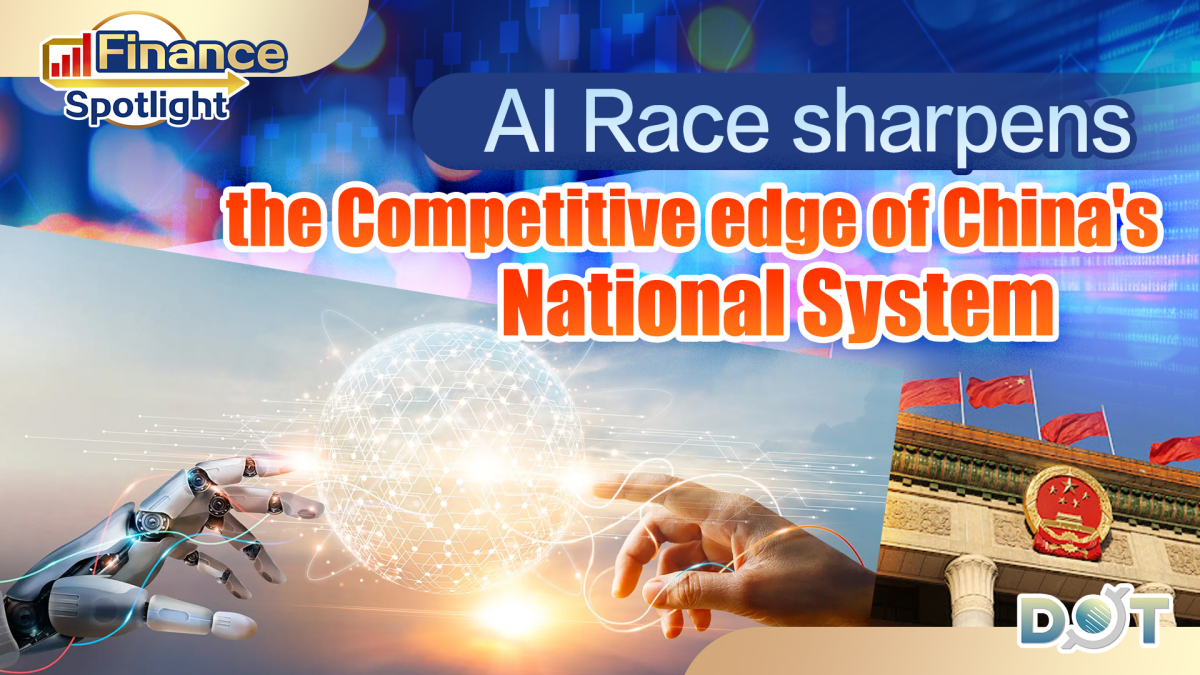
By Wang Nina
The Political Bureau of the Central Committee of the Communist Party of China held its 20th collective study session on strengthening the development and regulation of artificial intelligence (AI). This marks the first time in seven years, since October 31, 2018, that the Political Bureau has refocused on artificial intelligence, underscoring the central role of AI in China's national strategy. In this profoundly impactful global competition for AI supremacy, China is demonstrating its strengths through a new system for mobilizing resources nationwide to enhance its innovation capacity across the board, which may lead the world to move beyond stereotypes and reassess China's social system.
In today's fiercely competitive global technological landscape, China is writing a chapter of independent innovation in the field of artificial intelligence with its unique national systemic advantages. Recently, two seemingly isolated events—the State Intellectual Property Office (SIPO) cracking down on malicious trademark registrations for "DeepSeek" and Huawei accelerating the development of AI chips as alternatives to Nvidia amid the US-China tariff war—provide an excellent window into observing China's technology development strategy. These events vividly reflect the institutional advantage of "concentrating resources to achieve major undertakings" under socialism with Chinese characteristics, showcasing China's ability to build a full-chain innovation ecosystem from intellectual property protection to breakthroughs in core technologies.
The decisive rejection of 63 malicious trademark registration applications for "DeepSeek" by SIPO was far more than a routine administrative enforcement action—it was a strategic move to construct a protection system for technological innovation. Malicious squatting, at its core, represents an institutional plundering of innovative achievements, potentially trapping Chinese original technologies in a "fraudulent identity dilemma." SIPO's establishment of a blacklist for malicious registrations, compression of trademark review cycles to four months, and creation of a "green channel" for expedited reviews of tech companies' applications have formed a rapid response mechanism. This governance model of preemptive administrative protection is more aligned with the demands of fast-paced technological iteration compared to the lengthy judicial relief paths in Western countries. Simultaneously, while rejecting malicious registrations, the state is promoting DeepSeek's Chinese language data labeling standard (CLAS-2023) as a candidate for ISO international standards. This dual-pronged strategy elevates intellectual property protection into a battle for technical standard dominance. Unlike Western countries that rely on corporate-driven standard competition, China has developed a "government-guided, enterprise-led, alliance-coordinated" mechanism for advancing standards, seizing the initiative in institutional openness in emerging fields like AI ethics and data annotation.
Turning to Huawei, The Wall Street Journal reported on April 27 that Huawei is preparing to test its latest and most powerful AI processor, Ascend 910D, aiming to replace some high-end products from the American chip giant Nvidia. The development journey of Ascend 910D serves as a classic example of China overcoming "chokehold" technologies. Amid U.S. restrictions on chip exports and bans on equipment below 14nm, the complete breakthrough in design and tape-out processes for this AI chip, which rivals Nvidia's H100, reveals the advantages of the national system.
Huawei has collaborated with SMIC, JCET, and other enterprises to form an alliance addressing EDA tools, packaging, and testing. The government has provided targeted funding through the "Semiconductor Industry Investment Fund," coordinated IP core support from research institutions such as the Institute of Microelectronics of the Chinese Academy of Sciences, and built an innovation consortium characterized by "enterprise leadership, institutional support, and capital backing." This cross-sector, cross-domain resource mobilization capability has enabled China to advance its AI chip design capabilities by two generations within three years—a feat that typically takes 5-8 years internationally.
Faced with the current challenge of only 20% yield rates for domestic chips, the state has implemented a "Strategic User Cultivation Program" to create first-purchase markets in critical areas like smart cities and quantum computing. Huawei's Ascend chips have been deployed on national computing platforms such as Pengcheng Cloud Brain, using real-world applications to drive technological iteration. This closed-loop approach of "government facilitation, scenario validation, and market expansion" has shortened the technology maturation cycle by 40%, creating what is known as "China Speed" in the semiconductor industry.
From HiSilicon's chip designs to AMEC's breakthroughs in etching machines and New Rising Semiconductor's mass production of 12-inch silicon wafers, China is building a de-Americanized semiconductor supply chain. Through mechanisms like "posting challenges for heroes to take up," the government has broken down hard problems such as lithography machines into 93 key projects, mobilizing over 200 organizations for collaborative innovation. This systematic approach has led to breakthroughs in critical subsystems like EUV light sources and dual wafer stages, laying the foundation for eventually breaking the monopoly on lithography machines.
The practices of DeepSeek and Huawei signify the upgrading of China's national science and technology system to version 3.0. This new system is neither the total control of the planned economy era nor the laissez-faire free market model. Comparing the Sino-U.S. technological competition, China's national system demonstrates unique strengths: while the U.S. experiences delays in implementing the CHIPS Act due to partisan disputes, China achieves seamless government-enterprise coordination through its "chain leader system"; while the EU is mired in debates over AI ethical clauses, China has established 17 AI innovation development pilot zones. These differences in institutional efficiency show that China is forging a "Chinese path" for technological innovation through its new national system. The essence of this path lies in the strategic awareness of converting institutional advantages into technological superiority: maintaining an innovative ecosystem through effective governance, overcoming technological barriers with systematic thinking, and activating market vitality through institutional innovation.
While Western nations are trapped in the paradox of individual rationality versus collective dilemmas, China, through synergy among "effective markets, proactive governments, and organic societies," is achieving a historic leap from catching up to leading in strategic areas like AI and semiconductors. These technological breakthroughs born out of institutional innovation not only matter in industrial competition but also represent a uniquely Eastern "Chinese solution" in reshaping the global innovation landscape of the 21st century.
Related News:
DDN Business Insider | Traditional finance embracing on-chain trend




















Comment